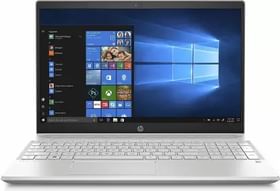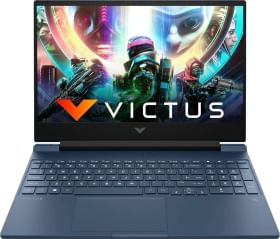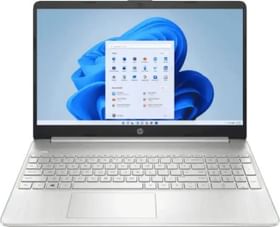MediaTek – the Taiwanese fab-less chipset maker, announced its flagship chipset the MediaTek Dimensity 9000 last month and it was Qualcomm’s turn. The San Diego giant in true fashion unveiled its latest crown jewel which will be rocking flagships most Android flagships in 2022.
Even before Qualcomm could officially unveil it, the benchmarks are out. The AnTuTu benchmark scores of the Snapdragon 8 Gen1 were already out. Reports claimed that Snapdragon 8 Gen1 (SM8450) was benchmarked while featuring in the Realme GT 2 Pro (RMX3300), which is the Realme’s upcoming flagship smartphone.
ALSO READ: India eye 6G rollout by 2024 even though 5G is yet to roll out in the country
Earlier, 8 Gen1 had received an AnTuTu score of 1025215 which was way better than the 850,000 scores of the Qualcomm 888+. Meanwhile, Dimensity 9000 (MT6983) had got an AnTuTu score of 107396, which had made it the first chipset to break the 1 million mark on Android. But now since both SoCs details are out in the open, let us have a look at which one has an edge over the other considering their specs in detail.
Snapdragon 8 Gen1 vs MediaTek Dimensity 9000: Specs comparison
| WiFi Support | Wi-Fi 6 and Wi-Fi 6E | Wi-Fi 6E |
| Video Capability | 8K HDR, 18-bit RAW, Dedicated Bokeh Engine | 4K HDR in all 3 cameras |
| Process Technology | Samsung’s 4nm | TSMC’s 4nm |
| Modem | 5G Modem-RF, Up to 10 Gbps Peak Download | 5G Modem, Only sub-6GHz band support, Up to 7 Gbps Peak Download |
| Machine Learning and AI | 7th-gen AI Engine; 3rd Gen Sensing Hub | 5th-gen AI processing unit (APU) |
| ISP | 18-Bit ISP; Snapdragon Sight | 18-Bit HDR ISP |
| GPU | Adreno GPU; Snapdragon Elite Gaming | Arm Mali-G710 MC10 |
| CPU Cores | 1x 3.0GHz (Cortex-X2) 3x 2.5GHz (Cortex A710) 4x 1.8GHz (Cortex A510) | 1x 3.05GHz (Cortex-X2) 3x 2.85GHz (Cortex A710) 4x 1.8GHz (Cortex A510) |
| CPU | Kryo CPU, Octa-core CPU | Octa-core CPU |
| Camera Capability | 3.2 Gigapixels per second, 240 12MP photos in one second | 9 Gigapixels per second, 320MP camera support |
| Bluetooth | Bluetooth 5.2, LE | Bluetooth 5.3, LE |
| CPU | Kryo CPU, Octa-core CPU | Octa-core CPU |
| WiFi Support | Wi-Fi 6 and Wi-Fi 6E | Wi-Fi 6E |
| Process Technology | Samsung’s 4nm | TSMC’s 4nm |
Snapdragon 8 Gen1 vs Dimensity 9000: GPU
GPU and CPU are the two most important specs of any chipset. Let us talk about GPU first. Qualcomm is known for custom-designing the Adreno GPU, whereas MediaTek sticks to ARM’s Mali GPU. Both the companies claim the new chipsets to be more than 20% powerful than their predecessors and at first look, Dimensity 9000 with the Mali-G710 GPU seems to have an edge over the Snapdragon 8 Gen1.
As far as hardware is concerned, both the chipsets come with capable GPUs but to see the results of thermal performance, we will have to wait for some time. For gaming, 8 Gen1 comes with features like Elite Gaming, dedicated Frame Motion Engine, true 10-bit HDR gaming, volumetric rendering, etc. Whereas, MediaTek Dimensity 9000 comes with raytracing SDK that helps enhance graphic visuals during gameplay.
Both the chipsets have support for native Vulkan API, which is a good thing but the difference can also be seen in the capability of driving a display at full HD resolution. Snapdragon 8 Gen1 can run a 144Hz display whereas Dimensity 9000 can support up to 180Hz at Full HD+ resolution. Overall, MediaTek Dimensity 9000 has a more powerful GPU on its hand for now.
Snapdragon 8 Gen1 vs Dimensity 9000: CPU
CPUs of both the chipsets have many similarities as both the SoCs are built on the 4nm process technology, but Dimensity 9000 has used TSMC’s fabrication process whereas Snapdragon 8 Gen1 is based on Samsung’s 4nm foundry. Both are developed on ARM’s new Armv9 architecture that promises better performance and power efficiency.
The Snapdragon 8 Gen 1 has an octa-core CPU with ARM’s most powerful Cortex-X2 core clocked at 3.0GHz; three new Cortex-A710 cores clocked at 2.5GHz and four high-efficiency Cortex-A510 cores clocked at 1.8GHz. Similarly, the Dimensity 9000 takes advantage of ARM’s Cortex-X2 core, but it’s clocked a notch higher at 3.05GHz. Plus, three Cortex-A710 cores can go up to 2.85GHz, again a bit higher than A710’s 2.5GHz on the Snapdragon 8 Gen 1. Finally, four new power-efficient A510 cores are clocked at 1.8GHz, just like the Snapdragon 8 Gen 1. As we can see, Mediatek is not holding back at all and going super aggressive with both Cortex-X2 and the balanced A710 core in terms of core frequency.
Qualcomm says the Snapdragon 8 Gen 1 is 20% faster and 30% more power-efficient than its predecessor. On the other hand, MediaTek has not put forth any such figures in public, so we will have to wait for the figures to conclude this.
However, as per rough estimate, the Snapdragon 8 Gen 1 has scored 1035020 in the AnTuTu benchmark test whereas MediaTek Dimensity 9000 has scored 1007396, as per recent leaks. Going by the raw numbers and the AnTuTu leak, it’s clear that MediaTek seems to have finally built a flagship chip that can compete against Qualcomm’s best offering. In fact, it’s almost close to surpassing Snapdragon 8 Gen 1 in synthetic tests.
Snapdragon 8 Gen1 vs MediaTek Dimensity 9000: ISP
Both the chipsets have been claimed to have improved ISPs. The Snapdragon 8 Gen 1 comes with a new 18-bit ISP that can capture 3.2 Gigapixels in a second. In comparison, the 18-bit HDR ISP on the Dimensity 9000 can capture 9 Gigapixels per second. Both the ISPs are pretty decent as per ISP specs, and you will have no issues as far as the camera experience is concerned.
As for the other camera features, the Snapdragon 8 Gen 1 can take 240 photos of 12MP resolution in one second. It also comes with a 5x enhancement in low-light photography and a dedicated engine for Bokeh video recording. Additionally, HDR videography has improved with four levels of dynamic range. Not to mention, the Snapdragon 8 Gen 1 is capable of shooting 8K videos in HDR, which seems pretty cool.
Talking about the Dimensity 9000’s ISP, it can do 4K HDR video recording in all three cameras simultaneously while maintaining power efficiency. On top of that, the Dimensity 9000 ISP supports image sensors of up to 320MP, which is great. There is also support for Super Night Video Recording for low-light video recording with minimal noise and artifacts.
Snapdragon 8 Gen1 vs MediaTek Dimensity 9000: Modem & Wireless Tech
In the connectivity department, the Snapdragon 8 Gen 1 has the best 5G modem available. It comes with an upgraded 5G modem that can go up to 10Gbps in peak download speed. It also supports a host of 5G features such as Carrier Aggregation, mmWave, and sub-6GHz bands.
On the other hand, the integrated modem on the Dimensity 9000 chipset supports sub-6GHz bands but no premium 5G mmWave bands are supported. It could prove to be a smart move too as this technology is very costly and thus quite unlikely to make its way around the world in the coming future.
Moving to Wi-Fi and Bluetooth, the Snapdragon 8 Gen 1 comes onboard with Wi-Fi 6 and Wi-Fi 6E. The Qualcomm processor also comes with Bluetooth 5.2 technology support. On the other side, the Dimensity 9000 has support for Wi-Fi 6E, Bluetooth 5.3, and Bluetooth LE. In a way, the Dimensity 9000 is the first smartphone processor with support for the latest Bluetooth 5.3 standard.
Snapdragon 8 Gen1 vs MediaTek Dimensity 9000: AI & ML
Qualcomm has been the leader in the Android smartphone segment in this regard. Qualcomm claims the 7th-gen AI engine on the Snapdragon 8 Gen 1 is four times more powerful than last year’s Snapdragon 888 while being 1.7x more power-efficient. In comparison, the Dimensity 9000’s 5th-gen AI processing unit (APU) is 4 times more power-efficient than its predecessors. In terms of performance, MediaTek claims the AI performance to be 50% to 90% faster than last year’s Snapdragon 888.
If we analyze these numbers, the MediaTek Dimensity 9000 is still behind Qualcomm’s 7th-gen AI Engine. Results of the tests on GeekBench ML in the Tensorflow Lite NNAPI test to find the actual scores are awaited.
Snapdragon 8 Gen 1 vs Dimensity 9000: Verdict
According to the specs that we have compared, I believe both the processors are promising and quite similar in many ways. While Qualcomm is trying to better things off with a focus on better thermal performance, MediaTek has been aggressive with its specs. The Dimensity 9000 supports higher core frequencies, a new GPU, powerful ISP, and more. To conclude, the world might finally see a worthy competitor in the form of MediaTek’s Dimensity 9000 against Snapdragon chipsets. What do you feel about the same, share your thoughts in the comments section.








































ano yan antutu scores ng mtk sabi breaks the record of 1m bat 100k lang scores a sa article nyo